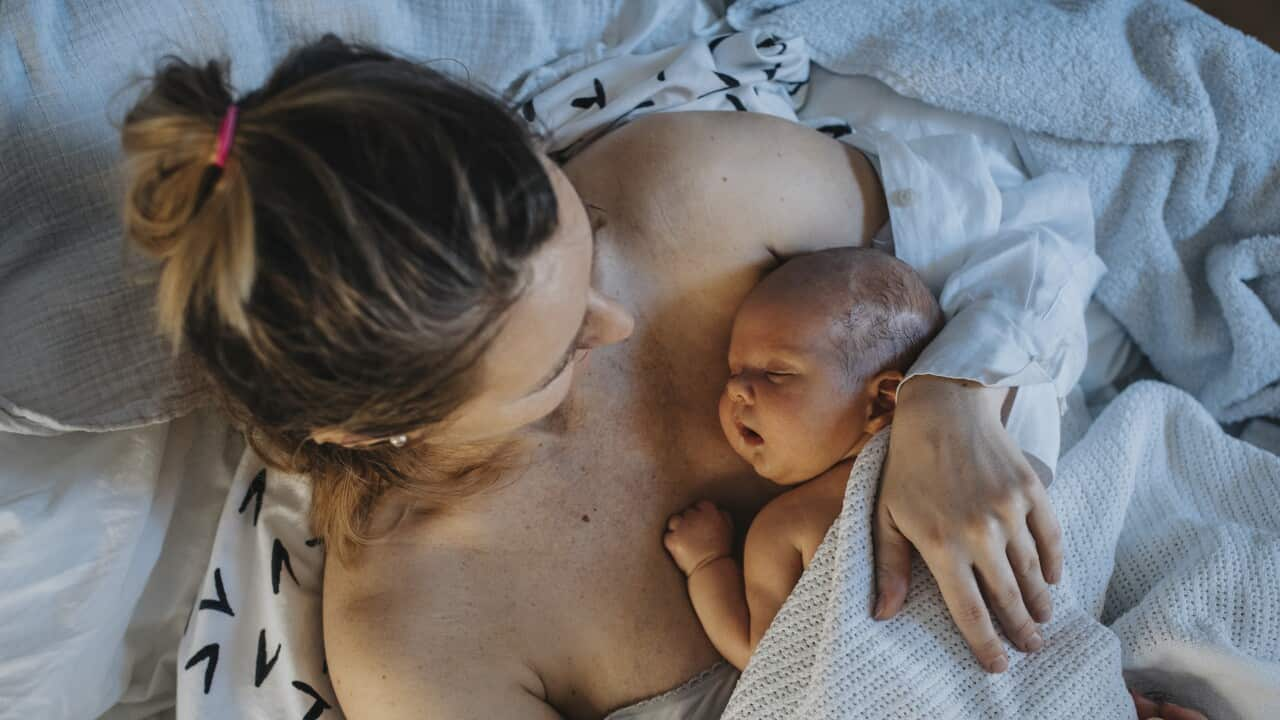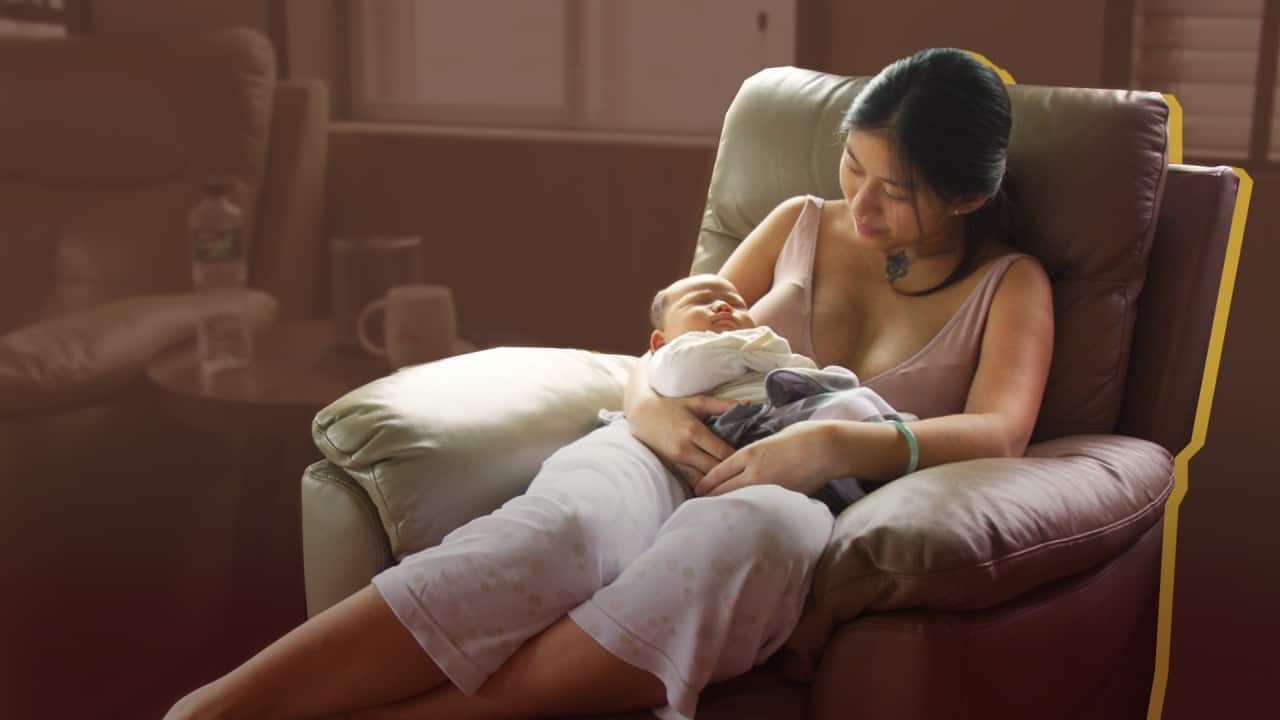Freebirthing, also known as wildbirthing, isn't exactly a new concept.
But the death of premature twins in Byron Bay last week has raised fresh concerns about the risky practice.
Health professionals generally agree it comes with increased risks for mothers and babies — so why do some people still choose freebirth, and what does it tell us about Australia's maternal care services?
What is freebirthing, and how does it differ from a homebirth?
Freebirthing is when a person chooses to give birth without a registered healthcare professional in attendance, according to professor Hannah Dahlen, a researcher and midwifery discipline lead at Western Sydney University.
"It is completely outside the system," she said.
"They may have some antenatal care — but they may have none at all, and they may employ an unregistered, unregulated birth worker, which may be a doula."
While a freebirth may happen at someone's house or another location special to them, it is "vastly different" to a homebirth, Dahlen said.
"Homebirth is an intentionally planned birth at home with a registered health provider, usually a midwife," she said.
"That midwife has the training, the skills, the regulation, the responsibility, provides care all through the pregnancy, provides labour and birth care at home, is able to recognise when there are deviations and complications, and transfer the woman in if she needs to go to hospital, and also provides up to six weeks postnatal care."
Alison Weatherstone, chief midwife for the Australian College of Midwives (ACM), said while the organisation believed that every woman should be able to choose their model of maternity care and place of birth, it discouraged freebirth.
"ACM strongly asserts that all women should be accompanied by an appropriately qualified and registered maternity care provider for labour and birth," she said.

Freebirth is legal in Australia, but there are many risks. Source: Getty / ideabug
Are freebirths riskier than other types of births?
Dahlen said freebirth was "definitely a risky option", compared to hospital and planned homebirth.
"The evidence for planned homebirth for low-risk women attended by competent midwives who are well-networked into the system is that the outcomes are better than hospital for intervention rates, as good for the baby, and better for the mother," she said.
"Freebirth's a whole different story because you don't have the skills to detect problems, you don't have the equipment to deal with problems, and it's a bit of a Russian roulette, to be honest."
"Your baby might be in a position that is not headfirst so coming as a breech, we know that adds complication; you may be having more than one baby, we know that adds complication; also, the mother may be bleeding and has no medication or skills to stop that; the baby may be born needing resuscitation and there's no equipment or skills to do that."
How common are freebirths and why do some people choose to have them?
While it's difficult to know the exact number of freebirths occurring in Australia each year given no data is recorded, both Dahlen and Weatherstone said anecdotal evidence suggested they are rising in popularity not only in Australia but around the world.
Weatherstone said there were many reasons why someone may choose to have a freebirth.
"For some women, it is their individual choice and that's what they want to have, and they've done whatever research they have done to lead them to that decision," she said.
"For other women, it might be that they can't access the model of care that they're looking for; for example, publicly funded homebirth or care with a privately practising midwife, which can cost a bit of money if you don't have the right health insurance or finances to support that.
"For other women, they are looking to avoid birthing in the hospital system for a number of factors — some of that includes fear or a previous birth experience or trauma that may lead them to hospital avoidance. If there was the right wraparound service, then that woman and family could be supported to come back into a setting, so that they don't feel like freebirth is their only choice."
Dahlen said while it was easy for people to "demonise" those who opt for freebirths and label them as "irresponsible and ignorant", many were stuck "between a rock and a hard place".
"We have a maternity system in Australia with some of the highest intervention rates in the world and deeply traumatised women who are really saying, 'I cannot face what is on offer. I cannot face being treated like that again. I'm going to take the risk,' and that is shame on us, less than shame on them," she said.
It's vital women are able to make "truly informed" decisions about where and how they choose to give birth, Dahlen said.
"I do worry about some of the social media groups and websites that I think don't give fully balanced information as to potential risks and also potential options," she said.
"We've interviewed several who in subsequent births made totally different decisions and had a trained midwife because things went very wrong.
"One woman had a significant postpartum haemorrhage and nearly died … and then for the subsequent babies, she had registered midwives and had great birth experiences."
What needs to change?
Dahlen said it was clear from the reasons why people chose to give birth outside the healthcare system that maternity services in Australia needed to be reformed.
"If we want to fix freebirth, we have to actually stop looking at freebirth as the problem and start looking at mainstream care as the problem," she said.
"We have to fix our maternity care system to provide more midwifery care, more continuity of care models, more homebirth, we need to fund and ensure homebirth so that it is not something that only a small minority can access, and we need to really work on humanising maternity care.
Kindness, compassion, and helping women with their trauma will go an awful long way to actually resolving this problem."
Weatherstone agreed.
"There will always be a cohort of women that actively and always will choose freebirth, and there's no way to really influence that because that will always exist," she said.
"But it is the women that are hospital-avoiding or they can't access a continuity model of care where they have the same midwife throughout all of their pregnancy, labour, birth, and postnatal period. They're the women that we really need to be supporting to engage so that we can change the system to meet their needs. "












